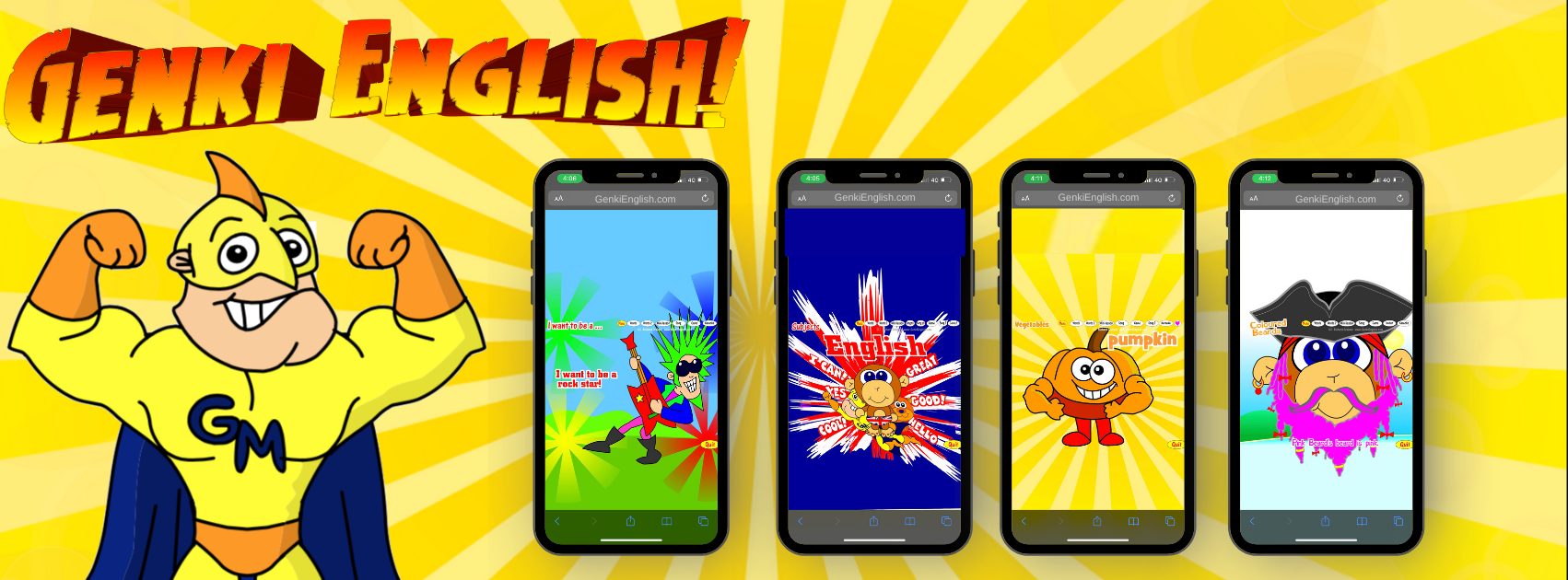Although I’ve been getting reports and feedback from the management, it’s the real, honest, feedback from the teachers I really need. Both to find out what needs changing in the current materials and how to best present the future materials and to select which future activities to give them for each theme.
As we, the trainers, had had about 2 hours sleep from working on the project I also decided to start a little slower. So I showed them Flossy’s Imagination video and they were so impressed with the work the kids had done!
Then straight into the evaluation exercise.
1. Put the teachers into groups.
2. Made sure there was at least one teacher who’s been doing GE every day in each group.
3. Set a time limit of 30 minutes
4. The teachers who’ve taught the curriculum go through each lesson in turn saying what was good and what was bad.
5. Everyone discusses and the teachers who haven’t done GE yet write these comments down.
6. After the time limit one person from each group gives me the feedback on the first theme.
7. The next person in the group gives me the next theme’s feedback etc.
There is a risk with this in that the new teachers, who’ve only had one day training so far, could latch onto the bad points and rule out using GE altogether in their heads (familiar grammar and rote learning are much more comforting for some teachers!) So keeping the good points in there is very important, as is taking turns to report to me, so that everyone listens intently! It was also strange for me as usually I can walk around and understand what the teachers are saying to each other, but today it was all in Chinese!
Anyway, the evaluation came back very different from what I thought!
The main good points, as expected, where that the kids loved the lessons (everyone of the them!) and really enjoyed all the gestures, songs and moving about. Great!
The main bad point, as latched onto by the new teachers, was that there were “too many words in each lesson”. A touch of deja vu from yesterday there! But the first example they gave of this was the Disco Warm Up! So I asked how many words they would teach in a traditional English lesson. The answer they said was five. So I asked them to count how many were in the Disco Warm Up, oh, it’s five! “But OK then”, they said “But the other themes have 8 which is way too many, the kids can’t learn them all in one lesson” They gave some examples of which lessons and we were like “But those were the things the kids were asking us in the playground the other day and they seemed so fluent.” To which the teachers replied “Now they can use them fluently, but they couldn’t do it in the first class”. And the teachers were genuinely worried by this! It’s exactly the same problem as yesterday.
Now I’m hoping I’m correct here in thinking that this is quite normal. Judging from your feedback on the blog and all my experience I think students shouldn’t “get” everything in the first lesson. If they did, doesn’t this just mean the lesson was too easy? Students should understand what all the words mean, but they shouldn’t be expected to remember them all after 45 minutes. It takes several listens of the song over several days to fully make the language a part of your knowledge that you can’t forget. Well, in any case I’m the boss today so what I say goes! If we find in the research that I’m wrong then fair enough I’ll learn for the future!
So I asked the teachers how many Chinese characters kids learn in one lesson. The answer was 8! Aha, the magic number. Of course some kids are faster and some are slower, but in general one sentence/question plus a good mix of easy words, middle level words and challenging words which total around 8 is usually the best for an “average” student. I then asked if the kids could do all the Chinese characters after the one lesson. “Of course not” they said, “We have to keep doing them for several weeks”. Da dah! Light bulbs going off everywhere…. except for some of the teachers they weren’t! Luckily the ones who are actually doing GE already seemed very happy with making this connection!
They said it takes around 3 to 5 lessons for the GE language to sink in, which is cool and will improve as the teachers get more practice. This doesn’t mean 3 lesson per theme though, it’s like:
Class1: Teach Lesson 1
Next class: Review lesson 1, teach lesson 2
Next class: Review lesson 1 & 2, teach lesson 3
Next class: Review lessons 1,2,3, teach lesson 4
Next class: Lesson 1 materials are now all remembered, so review lessons 2,3,4, teach lesson 5. etc.
Otherwise most of the themes were providing no other problems:
– What are you doing? and Harry Potter they said was great, which surprised me as many teachers have a problem teaching that theme (hence the new Eat! Drink! Dance! theme) but here they said it was easy!
– The colour song they said the kids were wanting better gestures than just pointing at colours. That’s good to hear, although I don’t have any ideas myself! Any suggestions from the blog readers?
– Where are you from? a similar thing. I’d told them not to do gestures otherwise you get all sorts of stereotypes coming out, but the kids were wanting to do some sort of movement. Without minicards or picture cards I’m still working on this! Any ideas? Although actually I was surprised that they were able to do this theme at all. Our test group is first grade and in many countries the concept of a “country” isn’t something the kids understand until much later. I was expecting this lesson to fail and take it out for next year. But here they said the kids all know what a country is and knew of many of them in the song! In first grade! Cool.
– How are you? – they were saying that however much they reviewed the kids still couldn’t say “tired” correctly. We had a listen and the kids were saying it correctly, it was the teachers who were wrong! So we might need to do some variance training for them in the future where they learn to distinguish which mistakes are acceptable (e.g. especially ones native speakers make) and which ones are not (i.e. mis-pronunciations that only another Chinese speaker could understand)
– Left & Right. Surprisingly this lesson had the biggest problems, especially with the Mr Bump game. The teachers were worried sick that the kids would hurt themselves and were insisting that I let them take the chairs out of the class so the kids wouldn’t hit them. But they couldn’t understand that this is in fact one of the safest games ever! After lots of talking it came down to the kids not trusting their partners to give them correct instructions. Also they were worried some kids would purposely ram their friends into the furniture!
I think most of you are probably laughing at this. But the aim of this game isn’t just the English, it’s fostering trust and the caring of the blindfolded person, very important class building skills. But it almost seemed as if these qualities were missing from the kids here. Looking around it also seemed they were missing from the teachers.
 Although many of them were friends, there was a certain lack of teamship about them. I asked them if they’d done the “fall over and let your partner catch you exercise” before. They’d never even heard of it. So naturally I got them to do it!
Although many of them were friends, there was a certain lack of teamship about them. I asked them if they’d done the “fall over and let your partner catch you exercise” before. They’d never even heard of it. So naturally I got them to do it!
They were really, really hesitant and untrusting of each other! So I got them to do it one at a time rather than en masse. There’s a reason this activity has become so popular, it’s because it works. The rush you get from doing it, and the automatic bond it creates between two people is amazing to see. You really could feel a difference in the room.
And the Mr Bump game is chosen to bring out this in the kids. Everything is there for a reason!
– How do you say … in English? They hadn’t quite got the hang of this lesson, which is quite common. Although one new teacher did say “Yes, when the random words appear how can the kids read what it is, there are no words written down”. Oh dear, looks like we need to review what Genki English is – the speaking and listening part of the course! The words are just there to help the teachers, they mustn’t be read, especially when they’ve only done half the phonics course so far.
Anyway, after a couple of hours of this I felt a lot more relaxed because the only real problem, of “too many words”, isn’t a problem at all and they were fine with activities for all the themes now. So that makes it a lot easier for me to make up the next set of lesson plans for them!
Then before lunch we had one of the teachers demo one of the high level phonics lessons. With the exception of the pronunciation, which we can fix by using computers, she did a really excellent job, easily as good as any teacher in the UK.
Part two coming tomorrow!




Well, it sounds like you’re getting there, Richard and how important it is to have feedback.
Sounds rather challenging. I really like the way you made the point about how much children can learn. I agree totally that some can understand 8 in one go others just a couple. This is the beauty of GE with it being so easy to use it for repetition. Children never get fed up with the songs or the choice of games, materials etc. to use for revision.
Builing team commitment is so important too in both the students and adults. I love the falling back game, even with students. I tend to have one child to 4 children though, just in case. Mr Bump is a great game and I always have a penalty system to deduct points if anyone making the blind folded person ‘crash’ on purpose!!!! It works.
For both the colour song, number songs and Where are you from? I always give the students mini cards and get them to hold them up for each one or to point if they are at their desks. I think rosebud suggested this when the number song came out and it works a treat! I know printing lots of cards is not possible for all teachers, so maybe just a couple of sets could be used and the relevant child stands when their card is sung??
Looking forward to part 2.
This is really neat stuff! Feedback is so useful for everyone concerned. I was really interested by the plan you suggested for teaching the lessons other several days. I go just a little bit slower for first graders (perhaps because of the time limits, but the kids have tennis right before the class on Tues and are very hot and tired, then Fri, well,it’s late morning Fri)When they have class influences their performance as well as the temp. Anyway, mine is:
Day 1: lesson 1 (45 min)mini lesson, song, games,song
Day 2: review 1 (30 min)song, line game, worksheets (ie spaghetti) if they have enough energy – link and intro 4 new words from lesson 2
Day 3: lesson 2
Day 4: review 1 and 2, intro lesson 3
Day 5: lesson 3
Day 6: once a month song day-review 1,2,3 and any songs requested by the kids
I don’t know if this is ideal, but it works fairly well.
For the color song I have the kids hold up objects they have of the appropriate color. They love trying to be the first ones to hold up a pen, pencil case or notebook since here we use platic covers of different colors.
Hi Richard, for very young learners I do a set of all the colors (like the side of a cookie) attached with a string/clip. THey can see one and turn the color to find another.
I made it out of contruction paper. So it´s cheap.
THey focus so much when I gave them this system.
I also made wrist bands who has ribbons attached to them.. and they grab the correct one when we sing each one. (Very VERY Cheap too)
I also separate the kids in groups. And gave each group something big about one color. OR several smalls.
THe idea is when the music call their color. All the team stand up and the others go down.
IT´s pretty challenge!
You can make little flags our of paper and a stick.
🙂
Hi Richard
I use some of your games in my Boys Middle School in Korea and played Mr Bump during Winter Camp. The boys loved it and played over and over. My co-teacher told me that she has used a similar exercise in Social Studies for understanding disabilities so the students were pretty familiar with the concept and very trusting of one another. Different cultures and social groups I suppose.
I’d just like to say that your website has been really useful to me, though I do adapt a few things to make them more appealing to surly teenage boys. And it’s always nice to hear a fellow English Northerner teaching the language!
Richard, it’s wonderful that you are having success with countries ALL OVER THE WORLD and with data to back it all up! Congratulations. It’s one thing to be successful if you are the teacher, but to train all these teachers and reach so many students is such a great accomplishment.
Thanks for shearing all this Richard. Its very interesting